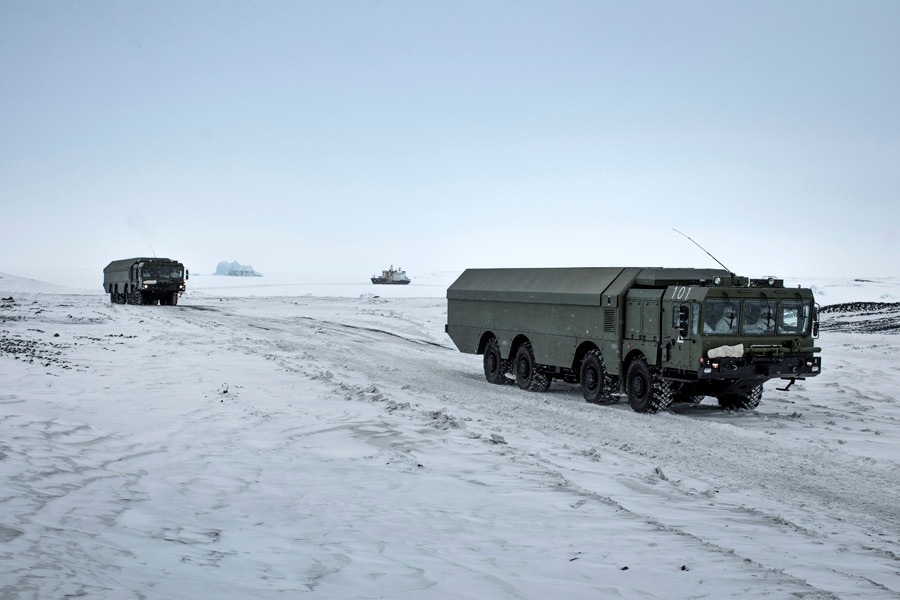
Russia issuing subtle threats that go far beyond a Ukraine invasion
Putin wants to extend Russia's sphere of influence to Eastern Europe and secure written commitments that NATO will never again enlarge
 Anti-ship missile systems are repositioned near Russia’s most northerly military outpost, on the Franz Josef Land archipelago, May 17, 2021. If NATO fails to meet its security demands in Eastern Europe, Moscow could take measures like placing nuclear missiles close to the U.S. coastline, Russian officials have hinted. (Emile Ducke/The New York Times)
Anti-ship missile systems are repositioned near Russia’s most northerly military outpost, on the Franz Josef Land archipelago, May 17, 2021. If NATO fails to meet its security demands in Eastern Europe, Moscow could take measures like placing nuclear missiles close to the U.S. coastline, Russian officials have hinted. (Emile Ducke/The New York Times)
VIENNA — No one expected much progress from this past week’s diplomatic marathon to defuse the security crisis that Russia has ignited in Eastern Europe by surrounding Ukraine on three sides with 100,000 troops and then, by the White House’s accounting, sending in saboteurs to create a pretext for invasion.
But as the Biden administration and NATO conduct tabletop simulations about how the next few months could unfold, they are increasingly wary of another set of options for President Vladimir Putin, steps that are more far-reaching than simply rolling his troops and armor over Ukraine’s border.
Putin wants to extend Russia’s sphere of influence to Eastern Europe and secure written commitments that NATO will never again enlarge. If he is frustrated in reaching that goal, some of his aides suggested on the sidelines of the negotiations last week, then he would pursue Russia’s security interests with results that would be felt acutely in Europe and the United States.
There were hints, never quite spelled out, that nuclear weapons could be shifted to places — perhaps not far from the U.S. coastline — that would reduce warning times after a launch to as little as five minutes, potentially igniting a confrontation with echoes of the 1962 Cuban Missile Crisis.
“A hypothetical Russian invasion of Ukraine would not undermine the security of the United States,” said Dmitry Suslov, an analyst in Moscow who gave a closed-door presentation on the standoff to Russian lawmakers last month. “The overall logic of Russian actions is that it is the U.S. and NATO that must pay a high price.”
©2019 New York Times News Service







